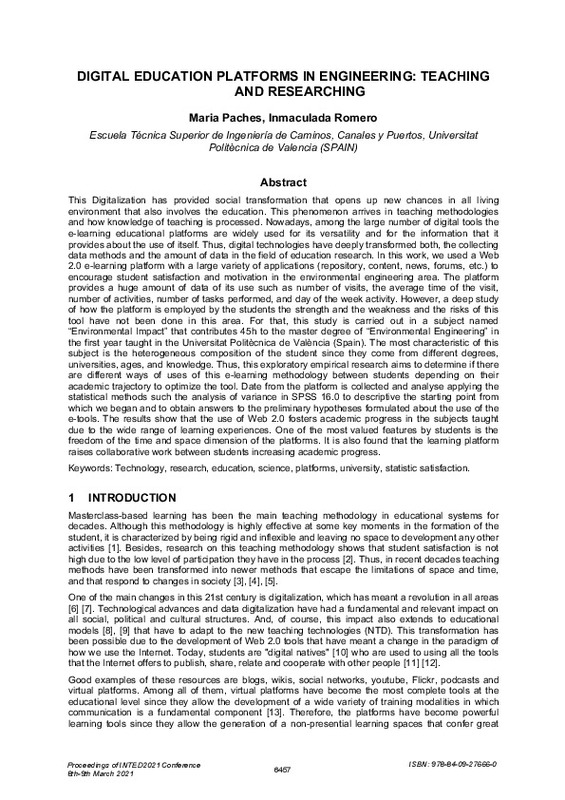|
Resumen:
|
[EN] This Digitalization has provided social transformation that opens up new chances in all living environment that also involves the education. This phenomenon arrives in teaching methodologies and how knowledge of ...[+]
[EN] This Digitalization has provided social transformation that opens up new chances in all living environment that also involves the education. This phenomenon arrives in teaching methodologies and how knowledge of teaching is processed. Nowadays, among the large number of digital tools the e-learning educational platforms are widely used for its versatility and for the information that it provides about the use of itself. Thus, digital technologies have deeply transformed both, the collecting data methods and the amount of data in the field of education research. In this work, we used a Web 2.0 e-learning platform with a large variety of applications (repository, content, news, forums, etc.) to encourage student satisfaction and motivation in the environmental engineering area. The platform provides a huge amount of data of its use such as number of visits, the average time of the visit, number of activities, number of tasks performed, and day of the week activity. However, a deep study of how the platform is employed by the students the strength and the weakness and the risks of this tool have not been done in this area. For that, this study is carried out in a subject named ¿Environmental Impact¿ that contributes 45h to the master degree of ¿Environmental Engineering¿ in the first year taught in the Universitat Politècnica de València (Spain). The most characteristic of this subject is the heterogeneous composition of the student since they come from different degrees, universities, ages, and knowledge. Thus, this exploratory empirical research aims to determine if there are different ways of uses of this e-learning methodology between students depending on their academic trajectory to optimize the tool. Date from the platform is collected and analyse applying the statistical methods such the analysis of variance in SPSS 16.0 to descriptive the starting point from which we began and to obtain answers to the preliminary hypotheses formulated about the use of the e-tools. The results show that the use of Web 2.0 fosters academic progress in the subjects taught due to the wide range of learning experiences. One of the most valued features by students is the freedom of the time and space dimension of the platforms. It is also found that the learning platform raises collaborative work between students increasing academic progress
[-]
|









